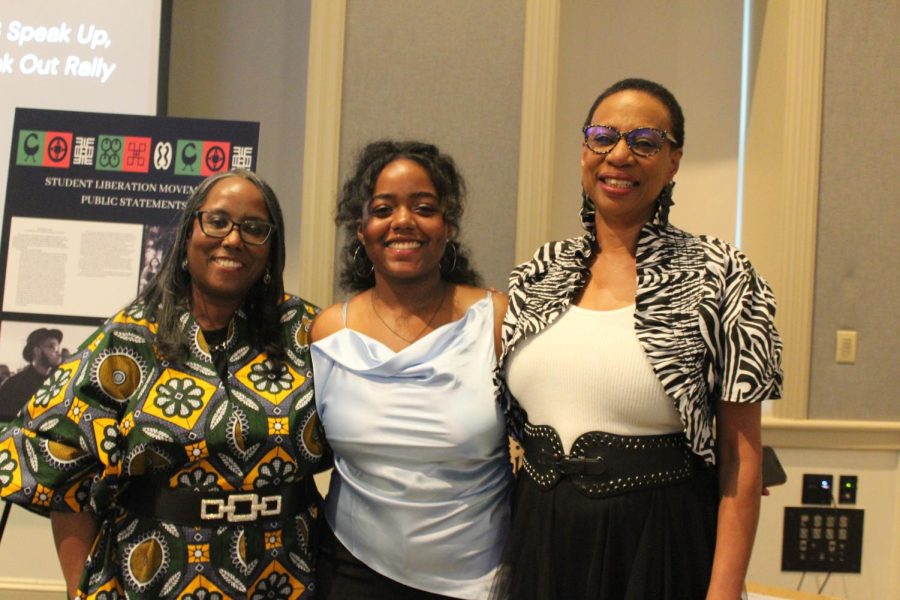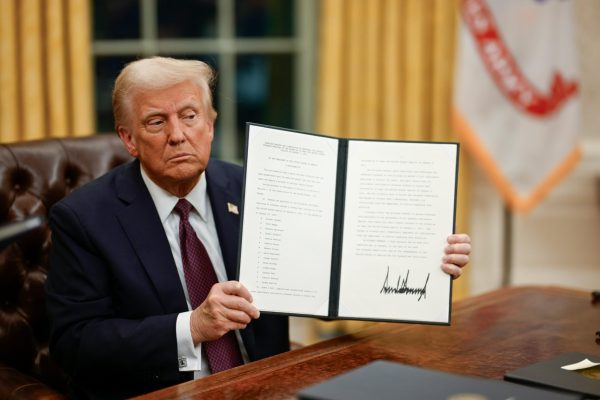Student Researchers Uncover History of Black Student Organizations at Dickinson
Student researchers presented 60 years worth of artifacts and information from the Dickinson archives about Black student organizations at Dickinson in the Stern Great Room on Saturday.
The students created large informational cardboard displays with pictures and descriptions of every Black organization students created at Dickinson from 1963 to the present day. There was an accompanying slideshow playing clips of the Black student body that helped shape the current racial, educational, and social climates of the college.
Africana Studies Professor Lynn Johnson oversaw the research process, hoping to demonstrate the history of united student voices and make current students “think about the mark you make on Dickinson College.”
Celeste Hopson ‘24 was appointed head researcher to carry out the idea Professor Johnson has wanted to fulfill since 2012. The majority of the research came from the Dickinson College Archives and Special Collections. Students taking Professor Johnson’s Approach To Africana Studies class were contributing researchers. She said, “the students were just as passionate about this as [she] was.”
Contributing researcher Destiny McFalls ’25 explained how the research required for the class helped her realize how much work went into achieving equity for Black students. These organizations made it possible to “start on the same playing field” as other students.
McFalls found that organizations such as the Congress of African Students and the Black Student Union tried to establish a Black culture and get more Black students on student senate to make their voices heard. She made connections with Dickinson alumni such as Komozi Woodard ’71 who faced racial aggression living through the first year of integrated dorms at the college.
Lilly Eidelberg ‘23, another researcher, found the research to be “such a rewarding process, seeing our history.” Past students advocated for equal opportunities, sometimes without the help of the college. For example, the Afro-American Organization’s request for school funding was not granted, so it was paid for by fundraising at first. Eidelberg feels as if the student body “doesn’t have the same momentum” as it used to, but hopes the exhibit “gives inspiration for students to get together” again.
The Black Arts Festival founded in 1969 brought artists such as B. B. King and poets such as Maya Angelou to the campus, in which all proceeds went to the Malcolm X Scholarship Fund.
The organizations were not limited to campus issues. The Black Liberation/Freedom School was a project aimed to contribute to the Black community in Carlisle. They held tutoring and information sessions, while additionally raising money to provide meals and supplies for students. Professor Johnson emphasized how “everybody had an investment, everyone had something to give.” The college students would apply for outside grants and put in ads to raise money if they didn’t get institutional support, because “Dickinson mattered to people.”
Eidelberg thought the event turnout was good, but disappointing, given the effort put into advertising. Posters were put up around campus and the event was listed on the EngageD app for all students to see. She thinks this proves that “subject matter makes things invisible sometimes.”







